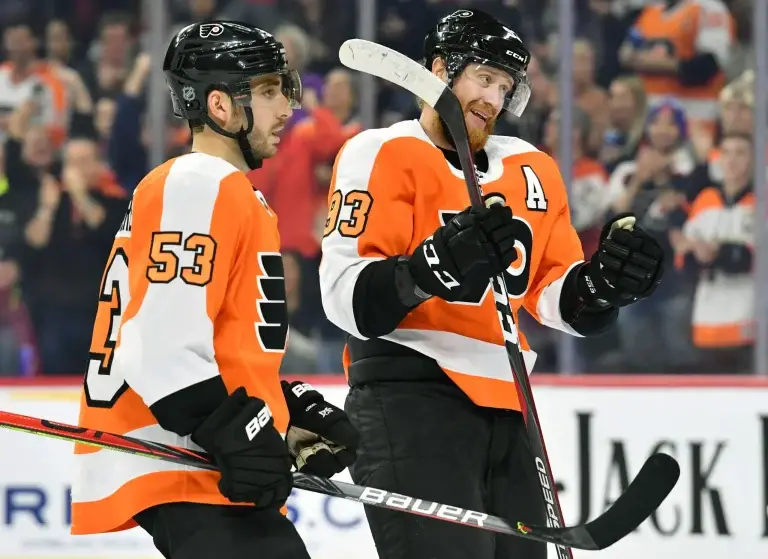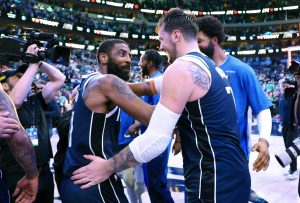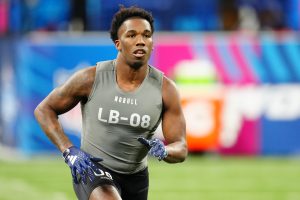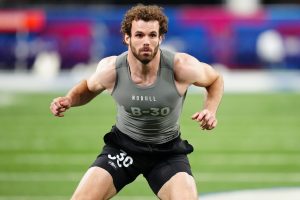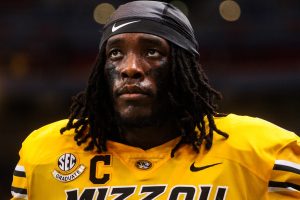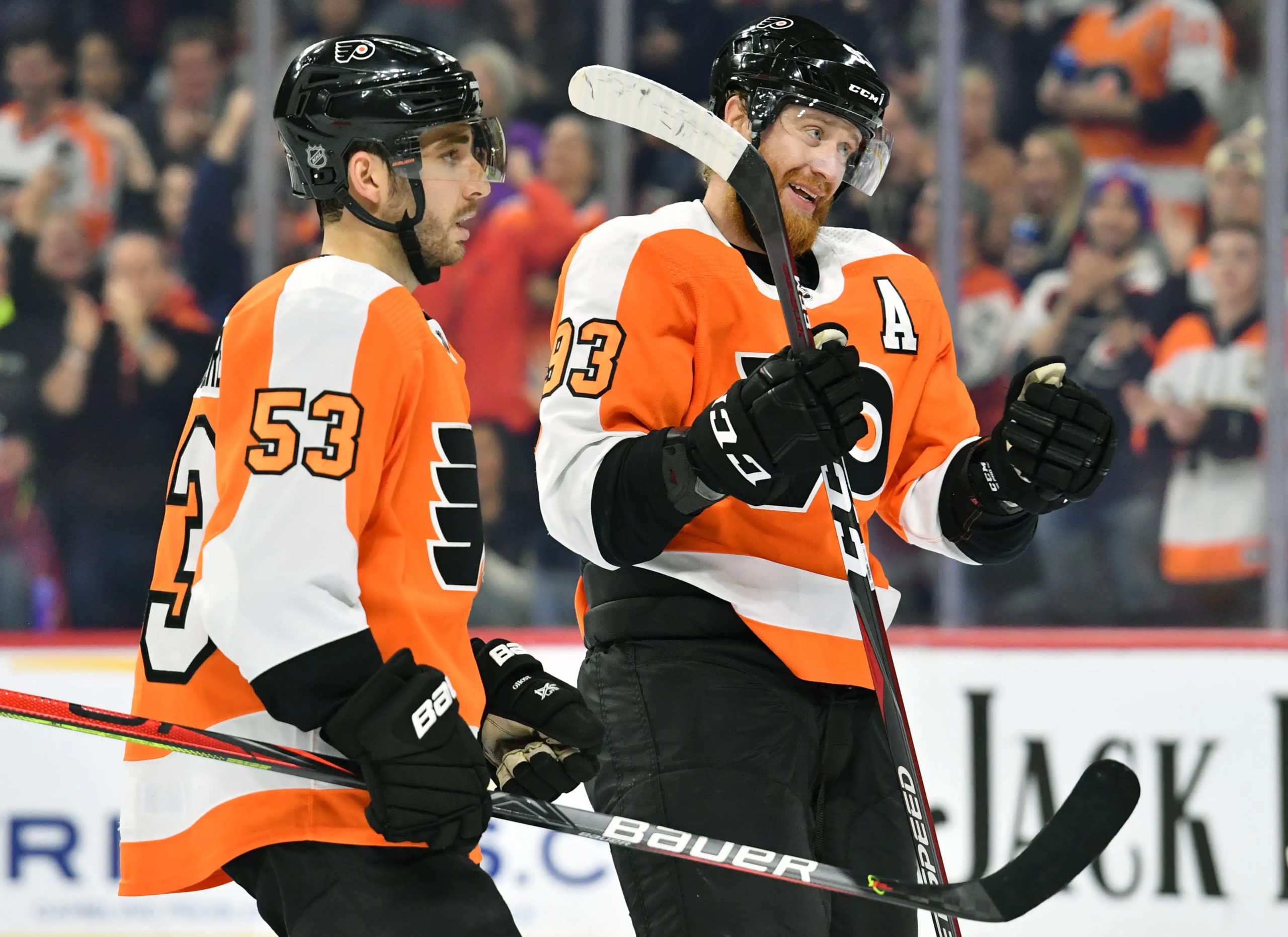
It is almost time to release the Kraken. In less than a month (July 21, to be specific), the Seattle Kraken will select one player from every single NHL roster (except the Vegas Golden Knights, the NHL’s newest team, who will not receive a share of Seattle’s $650 million league entry fee), to make up the vast majority of their inaugural team. Clubs and bloggers alike have been planning for this expansion draft for years. Contracts have been signed, trades have been made, and free agents have been offered contracts with this moment in mind, and in just a few short weeks, it will finally come to pass.
With so little time until the Expansion Draft, we have a pretty good idea of the players teams will be deciding on to protect. Of course, teams can still make trades between now and the July 18 roster freeze. We saw very few trades when Vegas entered the league in 2017, but a flat salary cap could spur action from even the most consistently passive GMs. Even if there are a few deals between now and July 21, we have a good enough idea to start making projections for what every single team will do.
First, for anyone not familiar with the Expansion Draft process (the same one as when Vegas entered), these are the rules. Every single NHL team (except Vegas, who we touched on earlier) will submit a protection list consisting of either seven forwards, three defensemen, and one goaltender OR eight skaters (regardless of position) and one goaltender. All first and second-year pros, as well as prospects still in the CHL, NCAA, or overseas, are exempt. Players with no-movement clauses (NMCs) must be protected unless they agree to be exposed. Each team must expose at least two forwards under contract in 2021-22 with at least 40 games played last year or 70 games played in the 2020-21 and 2019-20 seasons combined. They must also expose a defenseman that meets these requirements. And they must expose a goaltender who is either under contract next year or an RFA.
As for Seattle themselves, here are their guidelines. The Kraken’s drafted roster must be compliant with the NHL’s salary cap, totaling a cap hit between $48.9 and $81.5 million. They must draft at least fourteen forwards, nine defensemen, and three goaltenders; the remaining four selections can be used on players of any position. Seattle must select at least twenty players who are under contract through at least the 2021-22 season. They cannot buy out any player they select until at least the end of the 2021-22 season. During the window to make their picks, Seattle can sign any unprotected restricted free agents without giving up draft pick compensation or sign any unprotected unrestricted free agents; signing either would count as their selection from that team, however.
One last thing before we get underway: this article would not be possible without the wonderful Expansion Draft tool at CapFriendly. Their Expansion Draft FAQ was a huge resource in putting together the aforementioned guide. Make sure to check them out and make your own protection lists/draft your own Seattle Kraken team (once you have finished reading this article, of course).
This is the first article of at least six here on Vendetta covering the 2021 Expansion Draft. There will be four — one for each division — projecting protection lists from each team. After those are done, we will take a look at who Seattle is most likely to select from each club. And of course, we will be covering the Expansion Draft when it happens on July 21, analyzing each of Seattle’s picks and the impact it has on the rest of the NHL. But enough of the rules, here comes the East Division.
Boston Bruins (33-16-7, Lost to NY Islanders in Round 2)
Projected Format: 7-3-1
Forwards: Patrice Bergeron (NMC), David Pastrnak, Brad Marchand (NMC), Charlie Coyle (NMC), Craig Smith, Nick Ritchie, Trent Frederic
Defensemen: Charlie McAvoy, Matt Grzelyck, Jérémy Lauzon
Goaltender: Daniel Vladar
Four notable Bruins — Taylor Hall, David Krejci, Mike Reilly, and Tuukka Rask — are unrestricted free agents and therefore don’t need to be protected. Emerging rookie net-minder Jeremy Swayman is almost exempt. That opens up a lot of options for the B’s, who are trying to maximize the last few years of their aging core. Boston’s first five forwards, top two defensemen, and goaltender are easy calls.
The headline player available here is winger Jake DeBrusk. The 2015 1st round pick delivered a solid rookie season in 2017-18 (43 points), but his production plateaued the last two years before cratering this season, culminating in a series of healthy scratches. Ondrej Kase seemed like a shoo-in to be protected when he arrived from Anaheim at the 2019 trade deadline, but injuries and underperformance have the pending RFA on the outside looking in. Solid bottom-sixer Curtis Lazar, acquired from Buffalo in the Hall trade, is also available. Boston also has a pair of young defensemen in Connor Clifton and Jakub Zboril (another 2015 1st rounder). Clifton is the more likely of the two to be picked, given he played very solidly on Boston’s 3rd pair in their run to the 2019 Final.
Buffalo Sabres (15-34-7, Missed Playoffs)
Projected Format: 7-3-1
Forwards: Jack Eichel, Victor Olofsson, Cody Eakin, Anders Bjork, Tage Thompson, Casey Mitteltstadt, Sam Reinhart
Defensemen: Rasmus Ristolainen, Rasmus Dahlin, Henri Jokiharju
Goaltender: Dustin Tokarksi
Two notes about the Sabres. First, Tokarski is their only goalie under club control next season, meaning the Sabres do not fill that exposure requirement yet. An extension of starter Linus Ullmark or backup Carter Hutton or acquiring another goalie would fix that issue. And of course, the impending trades of core members like Eichel, Reinhart, or Ristolainen would change the Sabres protection list. Buffalo could also apply for an injury exemption for center Zemgus Girgensons, who missed the entire 2021 season, but that would not change much at all.
As you would expect from a last-place team, Seattle will not have many options on Buffalo’s roster. Easily the most appealing option is Colin Miller, who was taken by Vegas in their Expansion Draft from Boston. Miller is signed through next year at a manageable $3.875 million cap hit. If he could provide anything resembling the offensive punch he brought to Vegas in their inaugural year (41 points), it would be a massive boon. 23-year old depth forward Rasmus Asplund (14 points in 57 career games) is also a viable option.
New Jersey Devils (19-30-7, Missed Playoffs)
Projected Format: 7-3-1
Forwards: Nico Hischier, Andreas Johnsson, Jesper Bratt, Miles Wood, Pavel Zacha, Nathan Bastian, Yegor Sharangovich
Defensemen: Damon Severson, Will Butcher, Jonas Siegenthaler
Goaltender: Mackenzie Blackwood
New Jersey is a tough team to project outside of their top five forwards and goaltender since they have roughly a half dozen forwards who fit in the same mold: 23-25 years old with limited NHL experience and varying degrees of potential. They do not have many quality defenders outside of Severson, as Ryan Murray is a UFA and P.K. Subban carries a massive $9 million cap hit. Perhaps the Devils make a side deal involving Subban, but since the team is a rebuilder, I would be stunned if they were willing to attach a sweetener to ship off the last year of Subban’s deal. Talented youngsters Jack Hughes and Calder dark-horse Ty Smith are exempt.
As mentioned, the last two forward spots for New Jersey are anyone’s guess. On a more competitive team, Andreas Johnsson would be an exposure candidate after scoring just 11 points in 50 games as a first-year Devil, but considering he scored at roughly a .5 points per game pace the last two years in Toronto and his underlying numbers were very strong, he is likely safe.
Ultimately, I chose Bastian and Sharangovich for the last two spots because the former was recently extended (2 years at $825K, signed on June 15; although that would also help the Devils fulfill exposure requirements if they don’t protect him) and the latter scored 30 points, the most of anyone I considered exposing. On defense, Will Butcher is not the player he was as a rookie (44 points), playing in just 23 games this year due to injuries and healthy scratches, but he is still serviceable at the end of the day. The club recently traded a third-round pick to acquire Siegenthaler from Washington; losing the 24-year old for nothing would be awful asset management.
Now for who is available. Nick Merkley is a 2015 1st round pick who scored 10 points in 27 NHL games this year. Janne Kuokkanen scored 25 points in 50 contests and produced respectable underlying numbers (51.77% Corsi, 49.28% xG). Michael McLeod, the 12th overall pick in 2016, has 85 NHL games to his name. None are eye-popping names, to say the least, but all are quality players who could compete for a bottom-six spot and offer a little bit of upside.
New York Islanders (32-17-7, Tied With TB 3-3 in Round 3)
Projected Format: 7-3-1
Forwards: Mathew Barzal, Anders Lee, Brock Nelson, Jordan Eberle, Jean Gabriel-Pageau, Josh Bailey, Anthony Beauvillier
Defensemen: Ryan Pulock, Scott Mayfield, Adam Pelech
Goaltenders: Semyon Varlamov
The East Division champions will be able to keep their core intact heading into the fall. They may not be able to protect the Identity Line; but considering Martin’s term (signed through 2024), Clutterbuck’s cap hit ($3.5 million), and Cizikas’ pending UFA status, and I would be shocked if any of them depart the Island. The Islanders have seven key forwards other than those three, all of whom are listed above. New York’s forward core is in a great position to survive this process with minimal harm.
Things get dicier on the back-end. Pulock and Pelech have been one of the league’s best top pairings over the last few years and were at their best in 2021 (54.13% Corsi, 60.28% xG – 4th in NHL, min. 300 5v5 minutes). They are not going anywhere, but which of their two-second pair defenders gets protected? Nick Leddy is the bigger name, and coming off an offensive rejuvenation (31 points, his most since 2017-18), but Mayfield is very solid in his own right and carries a much better contract ($1.6 million through 2023). In the end, Mayfield gets my protection.
The Islanders are all set at goaltender with Russian rookie Ilya Sorokin exempt from the process. If Seattle decides Leddy’s contract is too high or his bounce-back year is misleading, there are few other options. The best option is 23-year old Kieffer Bellows. Taken 19th in the 2016 Draft, Bellows put up strong AHL numbers (31 points in 52 games) and has 22 NHL contests to his name. 2013 1st rounder Michael Dal Colle is probably next likeliest; he has some sneaky skill, but it has not translated at the NHL level (21 points in 111 games across four seasons). Joshua Ho-Sang was once regarded as a top prospect, but he is 25 and has not played an NHL game in two years. Ross Johnston is a physical but generic fourth-liner signed through 2022 at $1 million, and the decision is likely Bellows or bust if Leddy and Mayfield are not chosen.
New York Rangers (27-23-6, Missed Playoffs)
Projected Format: 7-3-1
Forwards: Artemi Panarin (NMC), Chris Kreider (NMC), Mika Zibanejad (NMC), Ryan Strome, Colin Blackwell, Filip Chytil, Pavel Buchnevich
Defensemen: Jacob Trouba (NMC), Ryan Lindgren, Libor Hájek
Goaltender: Alexander Georgiev
The Rangers’ four no-move clauses are the most in the East and tied with Dallas for second-most in the league (only Minnesota has more with 5). Panarin, Kreider, and even Zibanejad are performing as advertised. Trouba is not, but he has performed well enough that I would expect the Rangers to protect him over a depth piece like Anthony Bitetto. Additionally, like with their New York neighbors, their stellar young Russian goalie Igor Shesterkin is exempt.
The debate for the Rangers really only exists surrounding their seventh forward slot and whether it goes to Blackwell or Brett Howden. The latter is still young at 23 years old and was a key part of the return for Ryan McDonagh and J.T. Miller after going in the 1st round of the 2016 Draft, but he has disappointed in the NHL, scoring 49 points in 178 games (a 23 point-pace over 82 games) and is consistently bull-dozed at 5-on-5, outscored 98-67 at 5-on-5 over the course of his career. It is never a good sign when a 46.37% Corsi and 45.76% xG are career bests by a large margin.
To be honest, I had not heard of Blackwell before this season, but he scored 22 points in 47 games this year, both career highs. Yes, a lot of that is a product of spending over a third of his ice-time with Artemi Panarin, and his underlying numbers were poor, but Blackwell has at least shown that he can produce in the NHL, something Howden has failed to do. Then again, Blackwell should be a very easy player to replace. Twenty-three old Julien Gauthier – you guessed it, a 2016 1st round pick – brings physicality to a potential fourth-line, but not much else. Nothing too appealing for Seattle to choose from, regardless of who that last forward protection spot goes to.
Philadelphia Flyers (25-23-8, Missed Playoffs)
Projected Format: 7-3-1
Forwards: Claude Giroux (NMC), Kevin Hayes (NMC), Travis Konecny, Sean Couturier, Scott Laughton, Oskar Lindblom, Nolan Patrick
Defensemen: Ivan Provorov, Philippe Myers, Travis Sanheim
Goaltenders: Carter Hart
Philadelphia’s mission is clear: get Seattle to take on a big contract. Whether that comes in the form of James van Riemsdyk, Jakub Voracek, or Shayne Gostisbehere, the Flyers desperately want to clear cap space to, at a bare minimum, bring in a top-pair defenseman and an upper-end backup goaltender. Even if Nolan Patrick busts, he is cheap and still has potential (and therefore trade value), so that’s why he is on the protection list. Scott Laughton’s extension, signed on deadline day, means he needs protection as well. If the big money options turn Seattle off, Justin Braun is still a solid defensive defenseman at just $1.8 million. Nicolas Aubé-Kubel looked like a great bottom-sixer in 2019-20 but struggled with consistency and discipline this year. He is an extreme dark horse candidate coming off a down year.
Back to those veterans. JVR delivered a strong bounce-back year by underlying numbers and his raw point totals, scoring at a 63-point pace. He is an outstanding net-front presence and one of the best goal scorers available to the Kraken, but he is inconsistent, struggled during 2019-20, and carries an expensive $7 million price tag for the next two years. Jake Voracek’s contract is even worse ($8.25 million through 2024). Voracek is a gifted playmaker who scores at a nice clip, but his underlying numbers have been subpar for years, and like van Riemsdyk, he is a defensive liability.
Gostisbehere is arguably the most intriguing option; there have been thoughts the 2016 Calder runner-up and 2018 Norris vote-getter could return to that level in another city. And he bounced back enough from a nightmare 2019-20 campaign, scoring at a respectable rate and improving his defensive game (which will never be his strength), to be selectable. The Flyers would likely need to attach at least a moderate sweetener to get rid of any of those big contracts, but that path appears to be their most likely one.
Pittsburgh Penguins (32-17-7, Lost to NY Islanders in Round 1)
Projected Format: 7-3-1
Forwards: Evgeni Malkin (NMC), Sidney Crosby (NMC), Jake Guentzel, Jason Zucker, Bryan Rust, Kasperi Kapanen, Jared McCann
Defensemen: Kris Letang (NMC), Brian Dumoulin, Marcus Pettersson
Goaltender: Tristan Jarry
Yes, despite awful playoffs and all, Tristan Jarry is still being protected. Brandon Tanev and Jeff Carter have been surprisingly great fits since arriving in 2019 and 2021, respectively, but Tanev’s contract ($3.5 million… through 2025) and Carter’s age (35, plus a $5.272 million cap hit) could scare Seattle off. If not, losing either would not be devastating. If one of them is Kraken property next year, the Penguins may need to include a minor sweetener. Teddy Blueger has emerged as a quality bottom-six center over the last few seasons; the pending RFA is just 26 and had a breakthrough year offensively, scoring as many points (22) this year as he did last season, but in 26 fewer games. He looks like the chalk pick from the Pens.
If the Kraken looks at the backend, there is another buyer beware option in Mike Matheson. The Penguins acquired him and his terrible contract, $4.875 through 2026(!). Although he had a bit of a bounce-back year on a surprisingly solid pair with pending UFA Cody Ceci. Even though he makes $4.4 million through 2027, John Marino is still a second-year pro and therefore is exempt. 25-year old Mark Friedman is an intriguing depth option; he brings tenacity and a solid first-pass on breakouts to the table, while making just $725K through 2022 (and his free agency is restricted follow his current deal).
With Jarry (likely) protected, the Penguins are set to expose 29-year old Casey DeSmith. In 70 career games over three seasons, DeSmith has a strong .916 percentage and 11.1 goals saved above average; this year, he posted a .912 mark and 2 GSAA in 20 games. But his past off the ice is concerning, to put it extremely mildly.
Washington Capitals (36-15-5, Lost to Boston in Round 1)
Projected Format: 7-3-1
Forwards: Nicklas Bäckström (NMC), Evgeny Kuznetsov, T.J. Oshie, Anthony Mantha, Tom Wilson, Lars Eller, Conor Sheary
Defensemen: John Carlson, Dmitry Orlov, Brenden Dillon
Goaltender: Ilya Samsonov
Washington is by far the hardest team to create a protection list for in the East Division, even with Alex Ovechkin’s UFA status sparing a protection spot. Since it seems like the Capitals are hell-bent on chasing another Cup with the Ovechkin-led core (as they should be), both Oshie and Kuznetsov’s big contracts earn protection slots. Yes, Oshie is a Washington state native and the Capitals seem like they might want to move on from Kuznetsov, but even considering his massive contract ($7.9 million through 2025), Kuznetsov is simply too good a player to lose for nothing. That leaves every member of Washington’s solid fourth line (Carl Hagelin, Garnet Hathaway, and Nic Dowd) available. Hathway is probably the most palatable of the three; he makes $1.5 million for the next two years and brings a lot of physicality to the table.
There are a lot of options for Washington’s third defensive protection. I chose to protect Dillon, a solid defensive defenseman who has fit in nicely since arriving from San Jose at the 2020 trade deadline. Dillion is under contract through 2024 and at a $3.9 million cap hit, he is slightly cheaper than Justin Schultz. Schultz scored 27 points in 46 games in his first year in D.C. and is signed through next year at a $4 million AAV. For me, the choice is close to a coin flip between those two.
Looking at some of Washington’s other defensemen: Nick Jensen is a decent third-pair defender making $2.5 million and is also an option, as is Michal Kempny, who missed all of this season with a torn ACL. Remember, Kempny played a key role in Washington’s Cup run in 2018. 25-year old Vitek Vanecek’s solid season (.908 save percentage in 37 games) also puts him on Seattle’s radar.
Follow Us on Twitter! Also check out the Vendetta Shop and our partnership with SimBull (learn more here)!

